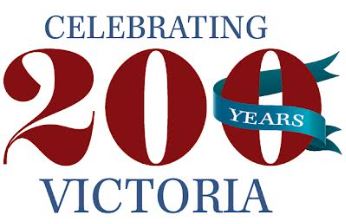Editor’s note: This is another in an ongoing series of articles we call “Marking History” looking at the stories behind the hundreds of historic markers scattered about the Crossroads.
Like the hometown he adopted, John Joseph Linn, one of Victoria’s original colonists, was an ever evolving figure — he was a merchant, politician, father of 14 children, Victoria’s first mayor, a soldier and historian.
He was also as complicated as the times he inhabited. He was an immigrant, at first unlawfully in Texas. He was an intense patriot, loyal to the De Leon Colony and to Texas, but not to every government the two resided under. He was a freedom fighter, and he enslaved men and women.
Most of all, found in the pages of his own reminiscences, is a man who loved Victoria, Texas, and the De Leon family, speaking admirably of Silvestre, one of Empresario Don Martin De Leon’s sons.
The foremost scholar on the De Leon Family, Ana Carolina Castillo Crimm, said Linn helped Dona Patricia De Leon flee Texas when the remnants of the founding family were exiled for a number of years.
He was lovingly called “Juan” by the Mexican colonists in Victoria.
On the corner of Bridge and Juan Linn Streets, next to the Victoria Police Department, sits a historic marker honoring the beloved Victoria colonial. The marker is across the street from Linn’s homesite. He died there in 1885.
Linn was born June 19, 1798, in County Antrim, Ireland, according to the Handbook of Victoria County, on hand at the Victoria Regional History Center.
His father, John Linn, a college professor, had to flee Ireland after participating in the Irish rebellion of the same year, 1798. He was branded a traitor by the British but escaped to New York.
John Joseph Linn was apprenticed at the age of 16 to a merchant and later “established his own merchant business in New Orleans in 1822 and became interested in Texas during business trips to Mexico,” Craig H. Roell wrote in the Handbook article. Linn had his sights set on the De Leon Colony.
Martin De Leon “needed additional colonists,” Crimm wrote in “De Leon, A Tejano Family History.
“Among the later arrivals were the Carbajal family and the four Benavides brothers,” Crimm noted. “De Leon also found sixteen Anglo-American families who had already moved into the area illegally, including John Linn, John D. Wright, and Joseph Ware.”
De Leon accepted these men, Crimm wrote, making the Victoria Colony remarkably inclusive.
One Mexican official who visited the colony in 1828, “indicated that there were individuals in the Victoria colony from Canada, the United States, Ireland, France and Germany. Unlike Austin’s settlements on the Colorado, Martin de Leon’s colony was, by necessity, multicultural from its inception,” Crimm wrote.
The Mexican authorities did not all “approve of the varied ethnic flavor of the Victoria colony,” Crimm noted.


Recent Comments